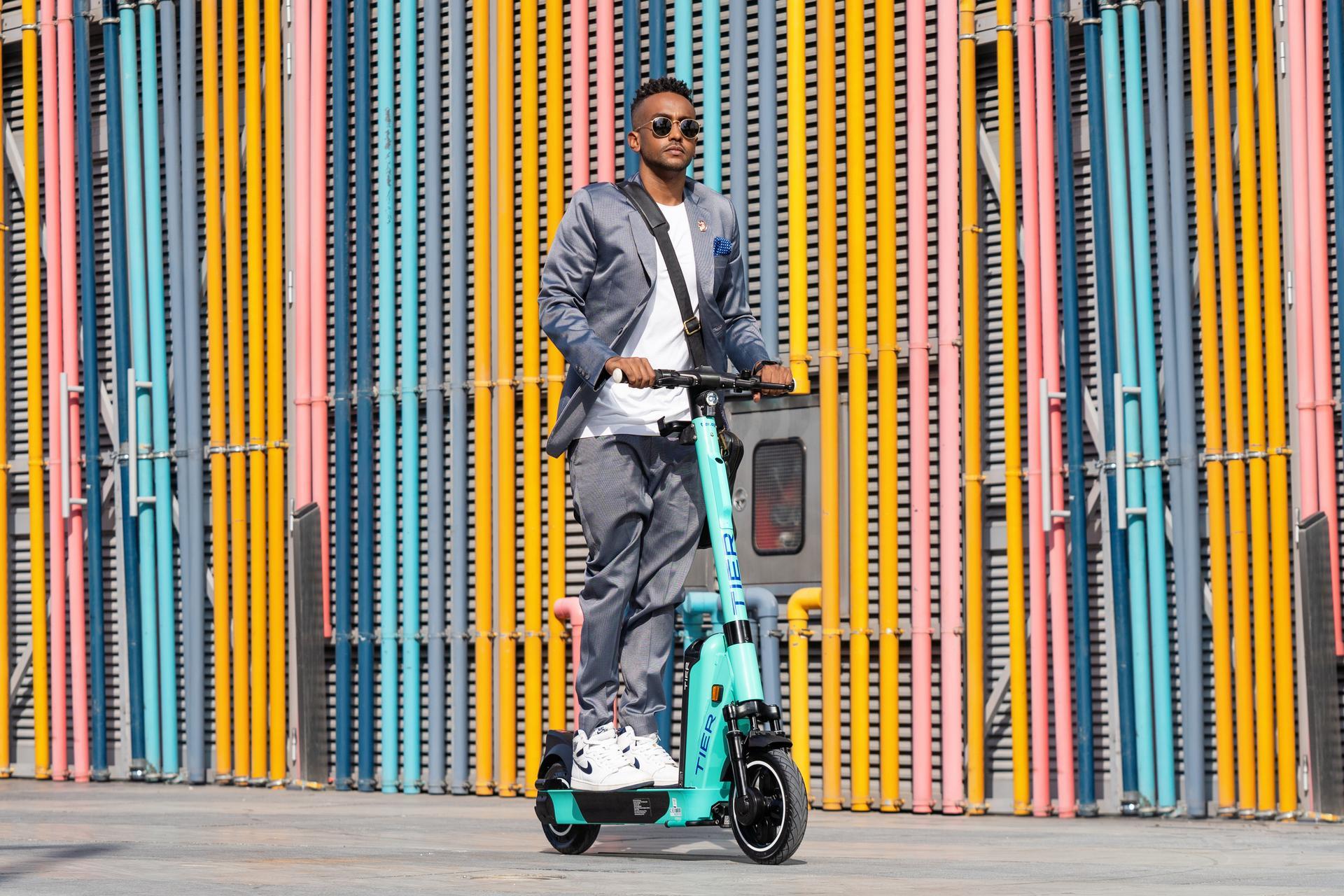Safety
Cities
Why investment in infrastructure is key to preventing pavement riding
October 7, 2022
By Kate Barnes, Head of Public Policy - Safety and Inclusion

At TIER, we believe that pavements are exclusively for pedestrians. We also know that riding on the pavement is dangerous for micro mobility riders, due to irregular and uneven surfaces. However, we also know that in rare cases, sometimes people ride our e-vehicles on the pavement which can understandably put pedestrians at risk and make them cautious and worried about micro-mobility. So why is this? TIER has been working with insights consultancy InnovationBubble to generate sector leading research to understand the cognitive and motivational processes of why a small minority of people ride on the pavement.
The primary reason why people ride on the pavement is because they feel unsafe on the roads, and perceive cars to be more dangerous than pedestrians. riders are universally more aware of the significant harm car accidents can cause and therefore naturally assume that riding alongside cars is more dangerous compared to riding alongside pedestrians on the pavement.
Secondly, because pavements are for pedestrians, they are naturally not built to meet the requirements of micro-mobility riders and other road users. As such, riders do not have to wait at traffic lights, are not faced with other vehicle congestion and are also not coming across tram or train crossings. Deemed as an inconvenience for some, riders move to the pavement and think they might be getting an immediate reward of freedom and the ability to continue their journey at ease. But this then also comes with new, and arguably more dangerous challenges such as navigating through busy crowds and colliding with other vulnerable road users - which is not only dangerous, but results in the opposite of what they’re trying to achieve: freedom of movement.
Finally, social cues make pavement riding feel permissible and acceptable. When riders observe others doing the same thing, it creates an illusion of acceptability - regardless of what the law may be. Additionally, ambiguity around the consequences of breaking rules means that there is no clear risk of punishment. Even if riders believe they may be breaking the law, if they have never seen or heard of a punishment being administered by city authorities or the police, so they believe that there are no consequences. In practice, riding on the pavement just becomes another norm. While it’s technically illegal, they may feel shielded from the consequences and therefore do it anyway.
So what can be done to prevent riding on the pavement? The answer is simple, invest in infrastructure. Evidence shows that riders prefer to ride on designated cycle and micro-mobility lanes on roads, rather than on pavements. This has been evidenced in Madrid - where pavement riding is illegal - and 91% of riders wanted to use a bike lane over the pavement or road, emphasising that ultimately riders want their own place on the road where they can feel comfortable, navigating their journey amongst fellow micro-mobility users. Investment in infrastructure can also lead to an increase in active travel. For example, according to the European Cyclists’ Federation,the continent’s cities spent €1bn on Covid-related cycling measures in 2020, creating at least 1000km of new cycle lanes, traffic calming measures and car-free streets. The outcome of this was brilliant. In the city of Paris, cycling is estimated to have grown by 70% since Spring 2020, Barcelona witnessed a 10% rise above pre-pandemic levels due to the installation of pop-up cycle lanes and similar instalments in Lisbon has increased the cycling population in the city by 25%.
Alongside investment in infrastructure, we need to challenge the idea that pavement riding is socially acceptable. At TIER we are proud to have introduced several features to play our part in preventing pavement riding, educating riders on how to keep themselves and others safe.
However - from our research, it is clear that in order to really prevent pavement riding - as well as further encourage the uptake of micro-mobility and encourage people out of their cars - we need structural change to our transport network which includes creating the correct infrastructure to ensure people are able to confidently ride bikes and e-scooters across cities. We will continue to implement new features and adapt our services to ensure that it is to the highest of safety standards but we also stand ready in supporting local authorities and governments in creating better infrastructure which will further encourage this fantastic progress to continue. And, once such infrastructure is in place - we hope to continue to reinforce the social norm that e-scooters and e-bikes belong in their own lane - and not on the pavement.